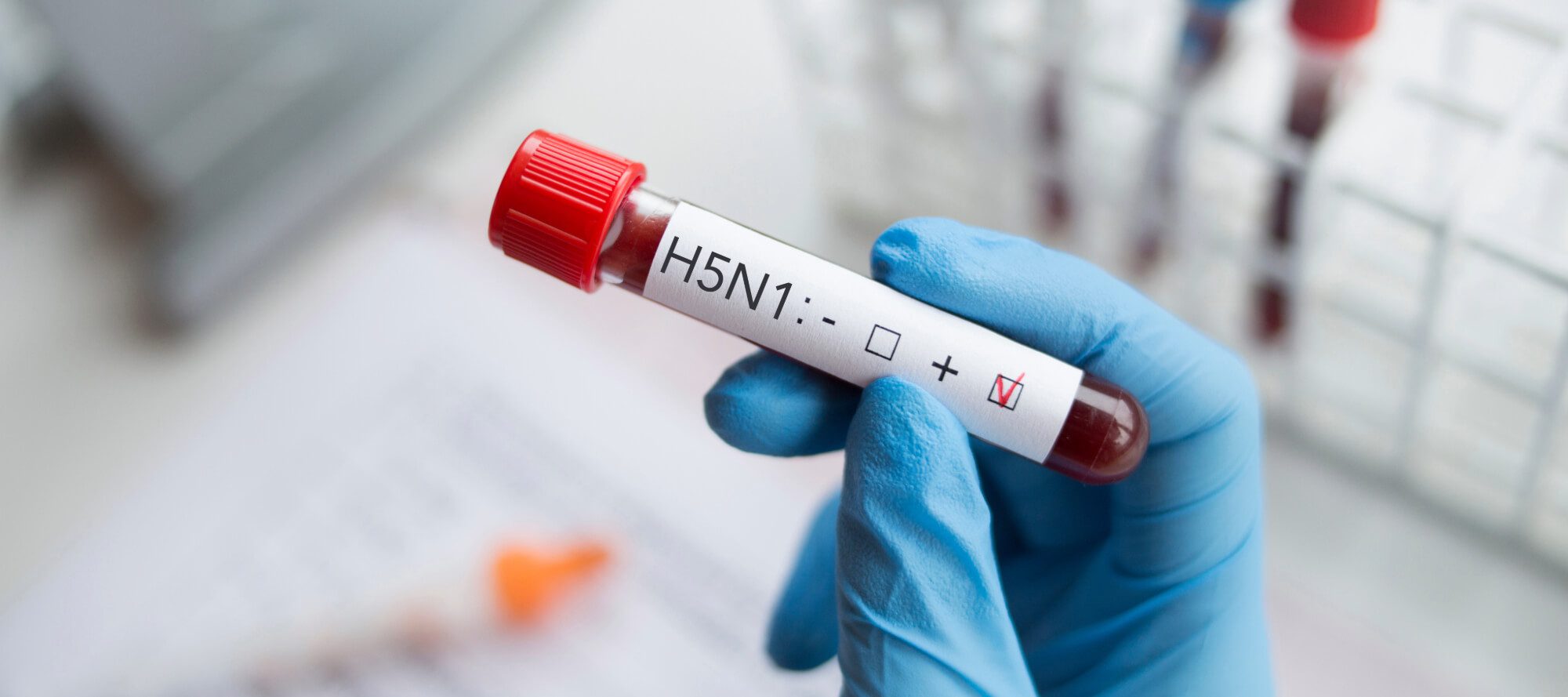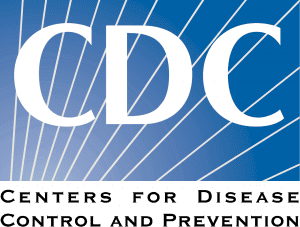- Antibodies to Influenza A(H5N1) Virus in Hunting Dogs Retrieving Wild Fowl, Washington, USA.
In this study investigators collected blood samples from 194 dogs identified by owners as having engaged in bird hunting or bird hunt tests and training over the previous 12 months. The investigators collected blood from the jugular vein and screened serum samples. They report that they detected antibodies to H5 and N1 subtype influenza A viruses in 4/194 (2%) dogs. They report that they detected antibodies to H5 and N1, but only in hunting dogs with high levels of bird hunting and waterfowl retrieval. Although that finding suggests transmission of highly pathogenic influenza A viruses (HPIAV) H5N1 from waterfowl to dogs can occur, low seroprevalence, lack of reported disease in seropositive dogs, and lack of evidence for dog-to-dog transmission among dogs sharing households collectively indicate that the subclade 2.3.4.4b HPIAV H5N1 strains that circulated in North America during 2022–2023 were poorly adapted to dogs. - Cow’s Milk Containing Avian Influenza A(H5N1) Virus — Heat Inactivation and Infectivity in Mice
To further assess the risk that HPAI A(H5N1)–positive milk poses to animals and humans, these investigators orally inoculated mice with infected milk. The animals showed signs of illness starting on Day One, including ruffled fur and lethargy. All the animals survived until Day Four, when they were euthanized to determine virus titers in multiple organs. They detected high virus titers in the respiratory organs and moderate virus titers in several other organs, findings consistent with the systemic infections typically caused by HPAI H5 viruses in mammals. Detection of virus in the mammary glands of two mice was consistent with the high virus load in the milk of lactating cows, even though these mice were not lactating.
- Risk Factors for Pediatric Critical COVID-19: A Systematic Review and Meta-Analysis
These are results of a meta-analysis that looked at critical COVID-19, defined as an invasive mechanical ventilation requirement, intensive care unit admission, or death, in 70 studies published from March 2020 to August 2023 and found a nearly 10-fold increased risk in kids who have two or more underlying medical conditions. They looked at 172,165 children, adolescents, and young adults with COVID-19 in 45 countries and reported that in healthy children with no comorbidities, the absolute risk of critical disease from COVID-19 was 4% (95% confidence interval [CI], 1% to 10%) so about 1 in 25. That seems high. Compared with no comorbidities, the pooled odds ratio (OR) for critical disease was 3.95 (95% CI, 2.78 to 5.63) for the presence of one comorbidity and 9.51 (95% CI, 5.62 to 16.06) for two or more comorbidities.
- The Risk of Aircraft-Acquired SARS-CoV-2 Transmission during Commercial Flights: A Systematic Review
These are the results of a systematic review and analysis of articles, published prior to vaccines being available, from 24 January 2020 to 20 April 2021 to identify factors important for transmission. Articles were included if they mentioned index cases and identifiable flight duration, and excluded if they discussed non-commercial aircraft, airflow or transmission models, cases without flight data, or that were unable to determine in-flight transmission. From the 15 articles selected for in-depth review, 50 total flights were analyzed by flight duration both as a categorical variable—short (<3 h), medium (3–6 h), or long flights (>6 h). Compared to short flights without masking, medium and long flights without masking were associated with 4.66-fold increase (95% CI: [1.01, 21.52]; p < 0.0001) and 25.93-fold increase in incidence rates (95% CI: [4.1, 164]; p < 0.0001), respectively; long flights with enforced masking had no transmission reported. A 1 h increase in flight duration was associated with 1.53-fold (95% CI: [1.19, 1.66]; p < 0.001) increase in the incidence rate ratio (IRR) of cases.
- Durability of XBB.1.5 Vaccines against Omicron Subvariants
Investigators use a cohort of approximately 1.8 million persons by linking records from the Nebraska Electronic Disease Surveillance System and the Nebraska State Immunization Information System (NESIIS). They considered four clinical end points: infection, hospitalization, hospitalization or death (whichever occurred first), and death. Overall, the XBB.1.5 vaccines were effective against omicron subvariants, although less so against JN.1. The effectiveness was greater against hospitalization and death than against infection, and it waned moderately from its peak over time. The ramping and waning patterns were broadly similar to those of the bivalent boosters.
- Post-COVID Conditions Following COVID-19 Vaccination: A Retrospective Matched Cohort Study of Patients with SARS-CoV-2 Infection
A study demonstrating pre-infection vaccination was associated with reduced risk of several PCC outcomes and hence may decrease the long-term consequences of COVID-19. Vaccination was associated with ≥10% lower risk of sensory (RR: 0.90, 0.86–0.95), circulatory (RR: 0.88, 0.83–0.94), blood and hematologic (RR: 0.79, 0.71–0.89), skin and subcutaneous (RR: 0.69, 0.66–0.72), and non-specific COVID-19 related disorders (RR: 0.53, 0.51–0.56). In general, associations were stronger at younger ages but mostly persisted regardless of SARS-CoV-2 variant period, receipt of ≥3 vs. 1–2 vaccine doses, or time since vaccination. - The Importance of Including Long COVID Outcomes When Developing Novel Treatments for Acute COVID-19
Article suggests that Long COVID outcomes should be included in studying treatments for acute COVID for several reasons. The authors argue there are seven compelling reasons to include Long Covid measurements, including: (1) Long COVID is not rare (2) Long COVID is debilitating to individuals and has a high societal cost (3) Those at high risk of severe COVID-19 are also at higher risk of developing Long COVID if they are infected with COVID-19 (4) Treatments for acute COVID-19 may reduce the risk of Long COVID (5) Measures exist to track Long COVID (6) Long COVID considerations are potentially important for acute COVID-19 treatment decision-making (7) Deaths and hospitalizations due to COVID-19 are increasingly rare, creating an opportunity for other important clinical endpoints to be considered. - Cerebral Microstructural Alterations in Post-COVID-condition are Related to Cognitive Impairment, Olfactory Dysfunction and Fatigue
Investigators employed magnetic resonance imaging to conduct a comparative analysis of cerebral microstructure among patients with Post-COVID-Condition, healthy controls, and individuals that contracted COVID-19 without long-term symptoms. They detected widespread alterations in cerebral microstructure, attributed to a shift in volume from neuronal compartments to free fluid, associated with the severity of the initial infection. Correlating these alterations with cognition, olfaction, and fatigue unveils distinct affected networks, which are in close anatomical-functional relationship with the respective symptoms. Authors state: “We show that COVID-19 leads to microstructural changes in the brain, which differ between participants with and without PCC symptoms,” … “A correlation between functional status and imaging data was identified, whereby the presence of PCC symptoms was associated with the affection of specific cerebral networks, suggesting a pathophysiological basis for this syndrome.” - Prevalence and Co-occurrence of Cognitive Impairment in Children and Young People up to 12-Months Post infection with SARS-CoV-2 (Omicron variant)
Investigators report the prevalence and characteristics of children and young people (CYP) reporting “brain fog” (i.e., cognitive impairment) 12-months post PCR-proven SARS-CoV-2 infection and tried to determine whether differences by infection status exist and (ii) explored the prevalence of CYP experiencing cognitive impairment over a 12-month period post-infection. They also investigated the relationship between cognitive impairment and poor mental health and well-being, mental fatigue and sleep problems. At -months post-testing, 7.0 % (24/345) of first-positives and 7.5 % (27/360) of reinfected CYP experienced cognitive impairment. At all-time points post-testing, CYP experiencing cognitive impairment were more likely to score higher on all Strengths and Difficulties Questionnaire subscales, higher on the Chalder Fatigue sub-scale for mental fatigue, lower on the Short Warwick-Edinburgh Mental Wellbeing Scale and report more trouble sleeping. - Long COVID Symptoms after 8-month Recovery: Persistent Static Lung Hyperinflation Associated with Small Airway Dysfunction
Investigators were looking at small airway dysfunction (SAD) and static lung hyperinflation (SLH) in patients with post-acute sequelae of COVID-19 (PASC). Sixty-four patients with PASC were enrolled between July 2020 and December 2022 in a prospective observational cohort. Pulmonary function tests, impulse oscillometry (IOS), and symptom questionnaires were performed two, five and eight months after acute infection. CD4/CD8 T-cell ratio was significantly correlated with residual volume to total lung capacity ratio (RV/TLC). Serum CD8 + T cell count was negatively correlated with forced expiratory volume in the first second (FEV1) and forced vital capacity (FVC) with statistical significance. Of the patients who had SLH at baseline, 57% continued to have persistent SLH after eight months of recovery, with these patients tending to be older and having dyspnea and fatigue. SLH was also significantly associated with fatigue.
Situation Dashboards

World Health Organization (WHO)
Novel Coronavirus (COVID-19) Situation from World Health Organization (WHO)

Johns Hopkins University (JHU)
Coronavirus COVID-19 Global Cases by the Center for Systems Science and Engineering (CSSE) at JHU

COVID-19 in US and Canada
1Point3Acres Real-Time Coronavirus (COVID-19) Updates in US and Canada with Credible Sources

Genomic Epidemiology COVID-19
Genomic Epidemiology of (COVID-19) Maintained by the Nextstrain team, enabled by data from GISAID.






